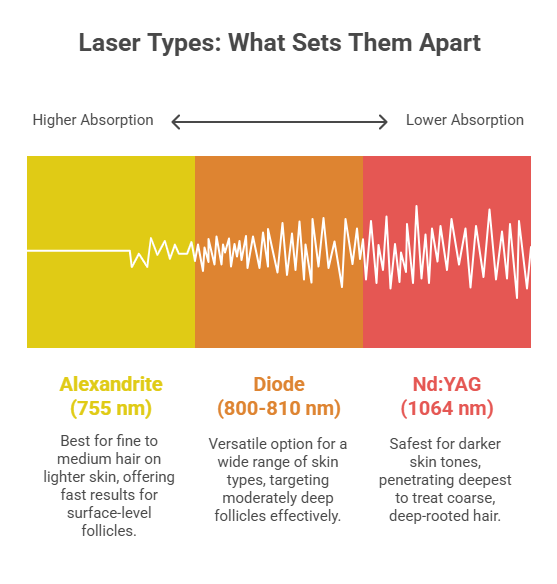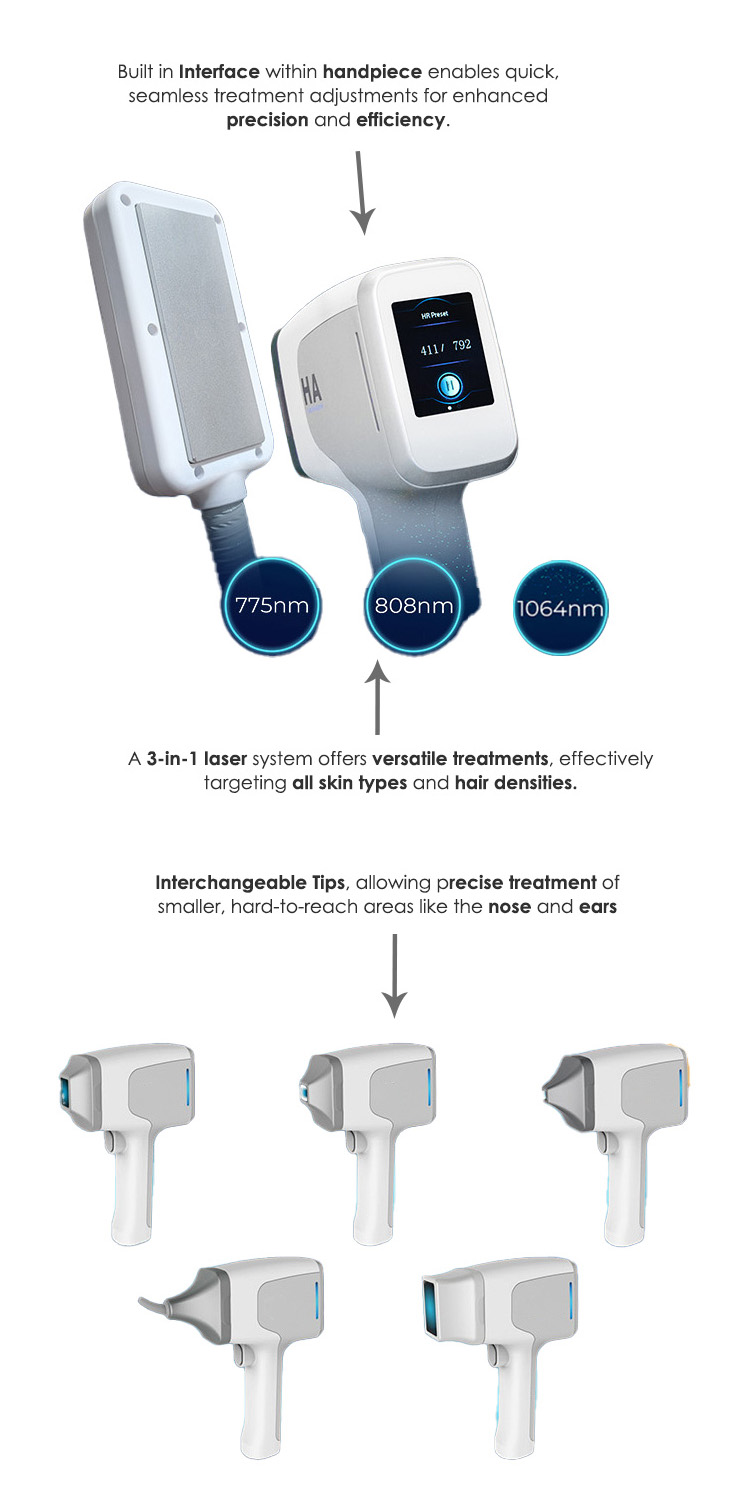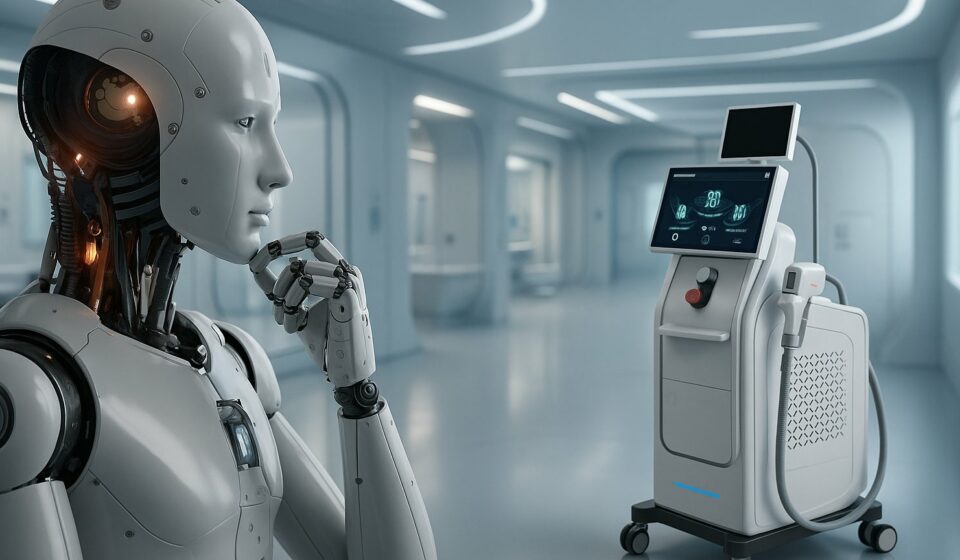The newest laser hair removal technology combines three proven wavelengths with smarter control, stronger cooling and built in safety intelligence, giving faster sessions with gentler skin feel across every skin tone.
Table Of Content
What “newest” really means in 2025
Progress is less about a single magical wavelength and more about how the system delivers energy. Modern platforms blend Alexandrite, Diode and Nd:YAG in one unit, then layer on adaptive software, real time skin monitoring and high duty cycle power supplies. Innovations like AI driven skin analysis and next generation cooling are highlighted by Future Market Insights, and they are exactly what clinics are asking for as demand keeps growing.
01. Core upgrades that define the latest wave
- Tri wavelength delivery: 755 nm Alexandrite for fine to medium hair on lighter skin, 808 nm Diode as the versatile workhorse, 1064 nm Nd:YAG for deeper follicles and rich melanin skin types.
- Smarter energy control: consistent fluence at higher repetition rates, with pulse widths tuned to hair calibre and depth.
- Skin analysis on board: scanners and analysers suggest parameters from Fitzpatrick type, hair colour and density, then save profiles for repeat visits.
- Advanced cooling: contact cooling at the sapphire tip plus high flow thermal management to keep the epidermis comfortable while heat concentrates in the follicle.
- Handpiece interface: parameter tweaks without leaving the treatment zone, which speeds workflow and reduces user error.
- Safety guardians: continuous contact sensing, shot counters, interlocks and wavelength matched eyewear protocols baked into training.

How it translates into everyday results
New generation systems are quicker on large areas, gentler on sensitive skin and more inclusive for darker tones. Diode remains the most widely used engine in clinics, taking around forty percent share, per Grand View Research, but the current leap is in how devices combine wavelengths and deliver stable energy at pace.
| Capability | Previous generation | Newest generation |
|---|---|---|
| Wavelength access | Single wavelength device | Three in one within one platform |
| Parameter setting | Manual by experience | Skin analyser assisted presets plus manual override |
| Cooling comfort | Basic cooling | High efficiency contact cooling across continuous shots |
| Workflow control | Settings only on main screen | Controls also on handpiece screen |
| Speed on large areas | Moderate repetition | High repetition with stable fluence |
Newest technology, applied: our three in one systems
At the British Institute of Lasers, the latest features arrive in practical, reliable packages with training and support included.
- Nu TriLaze Plus: three wavelengths with a built in skin analyser and HD detection for personalised settings. Interchangeable tips help with precise work on small areas. See Nu TriLaze Plus.
- Nu eRays Plus: enhanced handpiece control lets you adjust frequency, pulse width and intensity right where you are working, backed by FDA approved safety. Explore Nu eRays Plus.
- Nu TriLaze Lite: compact three in one power with SuperCool technology and very low running costs, ideal for mobile teams or multi room clinics. Details at Nu TriLaze Lite.
You can compare the range here: laser hair removal machines, then book a demo in our Coventry showroom or request details and finance.

02. Practical checklist before you invest
- Safety and certification: look for FDA approved status, wavelength matched goggles and Core of Knowledge training. Our Laser Protection Advisor service helps clinics stay compliant.
- Running cost: ask cost per shot, expected shot life, consumables and maintenance cycle. Low cost per treatment drives healthy margins.
- Support: check for rapid swap guarantees, live technical help and lifetime training. Downtime costs more than parts ever will.
- Fit to clientele: ensure access to all three wavelengths if you serve every Fitzpatrick type, plus small tips for noses and ears and large tips for legs and backs.
Where the tech is heading next
Expect even tighter energy stability at high speed, smarter presets from larger training datasets and further refinement in cooling plates and gel free comfort. Guidance in 2025 already notes improved targeting with less collateral thermal spread, as highlighted by Helen Cleland. Market momentum supports continued device innovation as clinics upgrade to meet strong consumer demand and broaden access across skin tones.
In short, the newest technology is three in one wavelength hardware paired with intelligent control, contact cooling and real world usability like handpiece interfaces and low cost per shot. If you want a hands on tour, book a demo. If you prefer a call first, request details and our team will talk you through settings, training and finance options.
Dr Majid Zarandouz
Majid holds a PhD in organic chemistry and has been working with laser systems for decades. His career began in the mid-1990s, when he started researching and developing laser-based technologies for medical and cosmetic applications. Over the years, he has combined scientific expertise with practical engineering to design machines that are effective, durable, and straightforward to use in real clinic settings. As director of the British Institute of Lasers, Majid continues to focus on producing equipment that meets professional standards while remaining accessible to businesses of all sizes.

